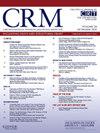根据钙分布和瓣膜几何形状得出的主动脉球囊瓣膜成形术结果--ABCD 研究。
IF 1.6
Q3 CARDIAC & CARDIOVASCULAR SYSTEMS
引用次数: 0
摘要
背景:关于球囊主动脉瓣成形术(BAV)的结果与瓣膜尺寸和钙化模式的关系的数据很少。该手术没有标准化,尤其是球囊大小的选择:这项回顾性多中心研究通过分析球囊大小、瓣环几何形状(即直径、周长和面积)和钙化模式(总负荷和钙在每个瓣叶的分布)之间的关系,重点研究主动脉瓣成形术的疗效和安全性。从 2018 年 3 月至 2023 年 3 月,所有接受有临床指征的 BAV 和心电图门控主动脉多矢量计算机断层扫描的连续患者均被纳入研究,但双尖瓣患者除外。根据+100 HU的管腔衰减阈值计算造影剂增强图像的钙化评分:结果:共纳入 115 名患者。手术成功率为 82.6%。相对于直径、周长和面积,成功 BAV 患者的球囊与窦腔比率(BAR)更高。BAV手术不成功的患者主动脉瓣钙负荷明显较高。并发症发生率为 4.3%,与瓣膜几何形状或钙质负荷无关。随着钙质不对称程度的增加,并发症发生率呈下降趋势。BAR最小瓣环直径是预测手术成功的最佳参数,临界值为0.85:BAV疗效与球囊大小和瓣环尺寸直接相关,而与总钙负荷成反比。瓣膜的最小直径可作为球囊大小的参考。本文章由计算机程序翻译,如有差异,请以英文原文为准。
Aortic balloon valvuloplasty outcome according to calcium distribution and valve geometry – The ABCD study
Background
There is little data on the outcome of balloon aortic valvuloplasty (BAV) in relation to valve dimensions and calcification patterns. The procedure is not standardized, particularly the choice of balloon size.
Methods
This retrospective multicenter study focused on BAV efficacy and safety by analyzing the relationship between balloon size, annulus geometry (i.e., diameters, perimeter, and area), and calcification patterns (total burden and calcium distribution over each individual leaflet). From March 2018 to March 2023, all consecutive patients who underwent clinically indicated BAV and ECG-gated multidetector computed tomography of the aorta were included, except those with a bicuspid valve. Calcium score was calculated on contrast-enhanced images based on a luminal attenuation threshold of +100 HU.
Results
One hundred and fifteen patients were included. Procedural success was 82.6 %. The balloon-to-annulus ratio (BAR) relative to diameter, perimeter, and area was higher in patients with successful BAV. Patients with unsuccessful BAV had a significantly higher aortic valve calcium burden. The complication rate was 4.3 % and there was no association with valve geometry or calcium burden. A trend towards a reduced complication rate was found as calcium asymmetry increased. BAR minimum annulus diameter was the best parameter in predicting procedural success, with a cut-off at 0.85.
Conclusions
BAV efficacy is correlated directly with balloon size in relation to annulus dimension and inversely with total calcium burden. The minimum diameter of the valve may be adopted as a reference for balloon sizing.
求助全文
通过发布文献求助,成功后即可免费获取论文全文。
去求助
来源期刊

Cardiovascular Revascularization Medicine
CARDIAC & CARDIOVASCULAR SYSTEMS-
CiteScore
3.30
自引率
5.90%
发文量
687
审稿时长
36 days
期刊介绍:
Cardiovascular Revascularization Medicine (CRM) is an international and multidisciplinary journal that publishes original laboratory and clinical investigations related to revascularization therapies in cardiovascular medicine. Cardiovascular Revascularization Medicine publishes articles related to preclinical work and molecular interventions, including angiogenesis, cell therapy, pharmacological interventions, restenosis management, and prevention, including experiments conducted in human subjects, in laboratory animals, and in vitro. Specific areas of interest include percutaneous angioplasty in coronary and peripheral arteries, intervention in structural heart disease, cardiovascular surgery, etc.
 求助内容:
求助内容: 应助结果提醒方式:
应助结果提醒方式:


